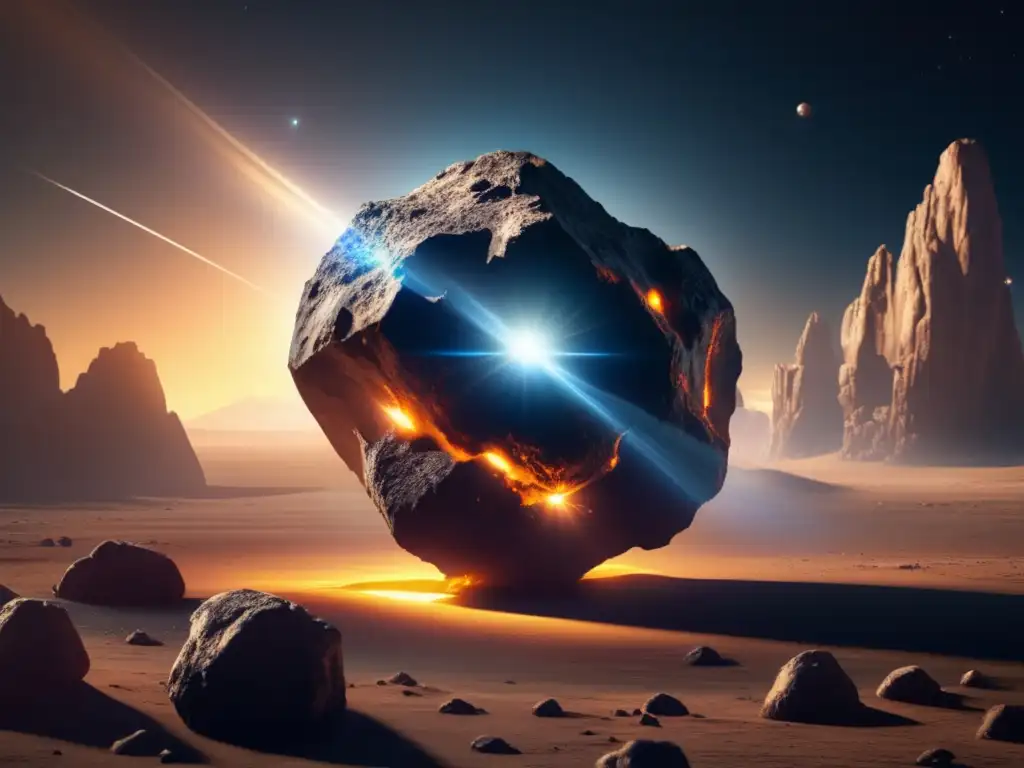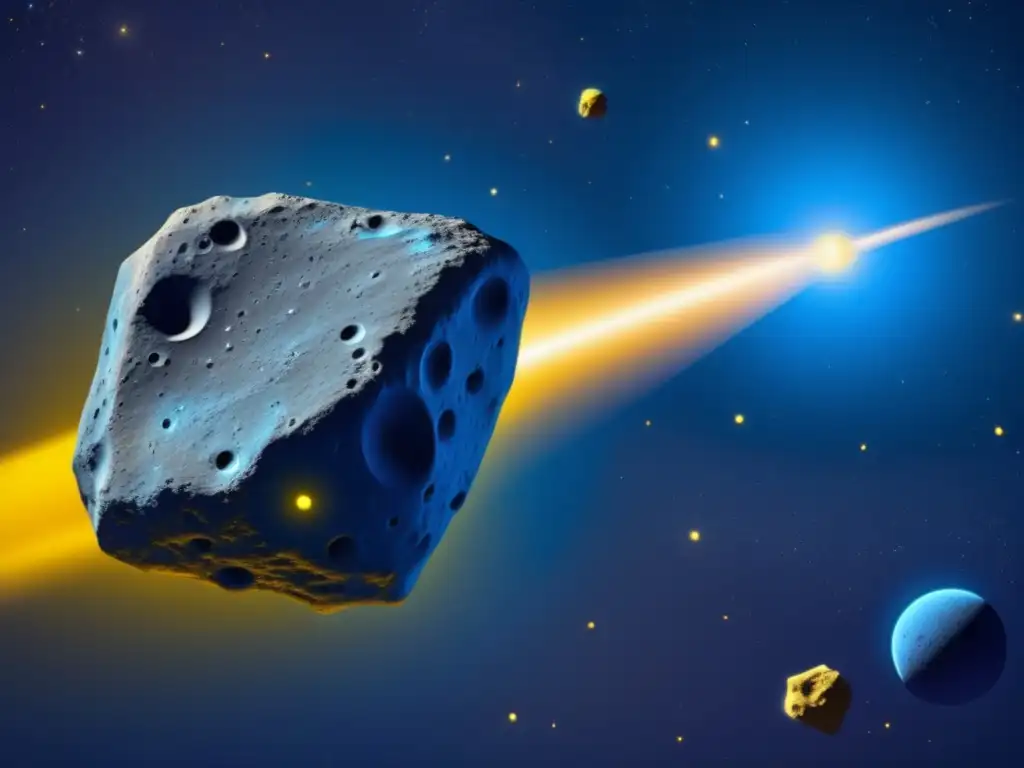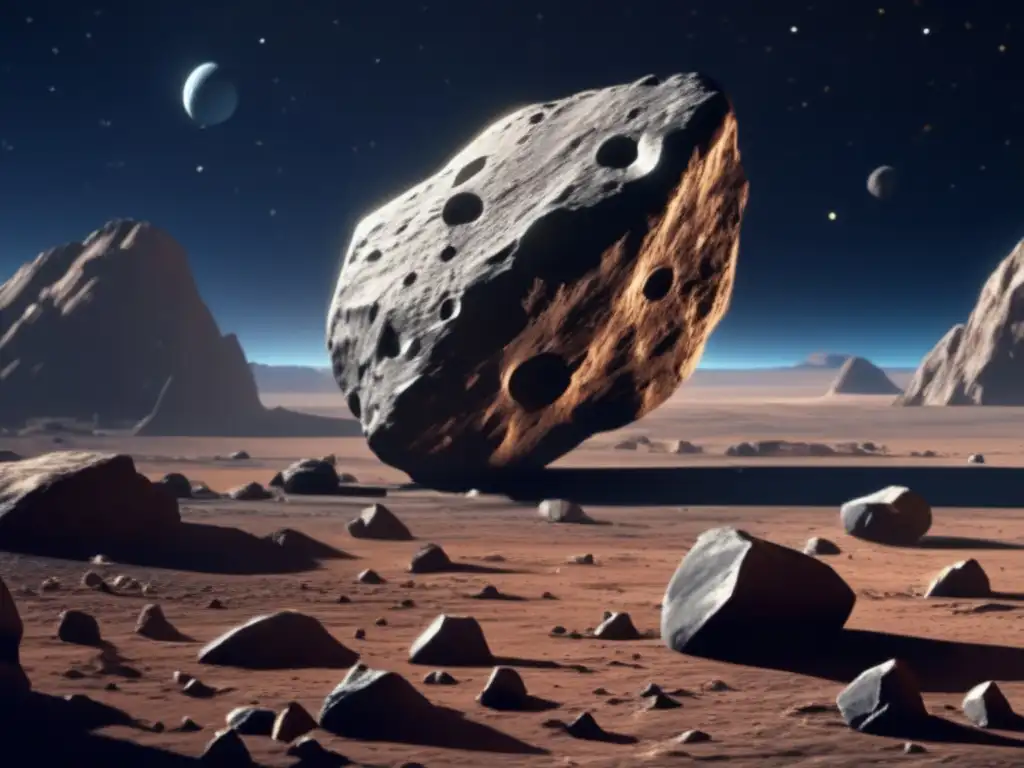Discovering The Scientific Importance Of Asteroid Nisus

Introduction
Asteroids have always fascinated scientists and astronomers with their unique characteristics and potential scientific value. In this article, we will delve into the scientific importance of a specific asteroid named Nisus. By examining its composition, orbit, and potential impact on our understanding of the universe, we can gain valuable insights into the world of asteroids and their significance.
Examining Nisus' Composition

Mineral Composition of Nisus
Nisus, classified as a C-type asteroid, is believed to primarily consist of carbonaceous materials. This composition suggests that Nisus contains organic compounds such as hydrocarbons, amino acids, and water ice. The presence of these organic compounds raises intriguing questions about the origins of life and the potential for finding signs of extraterrestrial life.
Physical Properties of Nisus
Nisus has an average diameter of approximately 25 kilometers and a relatively low density, indicating a porous structure. Its irregular shape and surface features provide valuable information about the formation and evolution of asteroids. By studying its topography and morphology, scientists can better understand the processes that shaped Nisus and other similar celestial objects.
Orbital Characteristics of Nisus
Nisus follows an elliptical orbit around the Sun, situated in the asteroid belt between Mars and Jupiter. Its orbital period is approximately 4.3 years. By analyzing the orbital parameters of Nisus, astronomers can study the dynamics of the asteroid belt, gravitational interactions with other celestial bodies, and potential collision risks with Earth.
Impact of Nisus on the Study of Asteroids

Insights into Solar System Formation
Studying asteroids like Nisus provides valuable insights into the early stages of our solar system's formation. Their composition and physical properties offer clues about the processes that led to the creation of planets and other celestial bodies. By analyzing Nisus, scientists can refine existing theories about the origins and evolution of our solar system.
Potential for Resource Extraction
Given its carbonaceous composition, Nisus and other similar asteroids hold potential for resource extraction in the future. Water ice, in particular, can be used as a valuable resource for supporting human missions in space. The study of Nisus helps researchers understand the availability and accessibility of such resources, aiding future space exploration endeavors.
Understanding Impact Hazards
Studying Nisus and its orbital characteristics allows scientists to better assess the risks posed by near-Earth asteroids. By studying its trajectory and potential collision scenarios, researchers can improve early warning systems and develop strategies for mitigating the effects of asteroid impacts. Nisus serves as a valuable case study in understanding and preventing potential catastrophic events.
Potential for Future Discoveries

Exploring Organic Chemistry
Nisus' carbonaceous composition makes it an ideal target for studying organic chemistry in space. By analyzing samples collected from Nisus or similar asteroids, scientists can gain insights into the chemistry that occurred during the early stages of our solar system. This knowledge can provide further understanding of the origins of life on Earth and the potential for life elsewhere in the universe.
Unveiling the Secrets of Dwarf Planets
Studying asteroids like Nisus can help scientists unlock the mysteries of dwarf planets, such as Ceres. By examining their similarities and differences, researchers can gain a deeper understanding of the processes and conditions that gave rise to these unique celestial bodies. Nisus' characteristics provide valuable data for comparative planetary science.
Advancing Space Exploration Technologies
Nisus and similar asteroids are not only valuable for scientific research but also for technological development. The challenges posed by asteroid exploration, such as sample collection and resource utilization, drive innovation in spacecraft design, robotics, and mining technologies. The study of Nisus contributes to advancements in space exploration capabilities.
Frequently Asked Questions

-
What is the composition of asteroid Nisus?
Nisus is primarily composed of carbonaceous materials, including organic compounds and water ice.
-
What can we learn from studying Nisus?
Studying Nisus provides insights into solar system formation, potential resource extraction, and understanding impact hazards.
-
What are the potential future discoveries related to Nisus?
Future discoveries related to Nisus include insights into organic chemistry, dwarf planet exploration, and advancements in space exploration technologies.
-
Can Nisus pose a collision risk to Earth?
While Nisus' orbit does intersect with Earth's orbit, the current assessment shows no immediate threat of collision.
-
Are there plans for future missions to study Nisus?
There are currently no specific plans for dedicated missions to study Nisus, but its scientific importance may influence future exploration endeavors.
Conclusion
Nisus, with its unique composition, physical properties, and orbital characteristics, plays a crucial role in advancing our understanding of asteroids and the solar system. By studying Nisus, scientists gain insights into solar system formation, resource extraction potential, impact hazards, organic chemistry in space, dwarf planet exploration, and technological advancements in space exploration. Continued research on Nisus and other asteroids will pave the way for future discoveries and contribute to humanity's journey into the depths of the universe.
We invite you to share your thoughts and engage with www.asteroidrealm.com by subscribing, sharing this article on social networks, and actively participating in discussions. Thank you for your time and attention.
Additional Resources

For further exploration of asteroids and their scientific importance, please refer to the following resources:
 Asteroid Euryalus: The Story Behind The Name
Asteroid Euryalus: The Story Behind The Name Delving Into The History Of Asteroid Capys
Delving Into The History Of Asteroid Capys Understanding Asteroid Euphorbus And Its Significance
Understanding Asteroid Euphorbus And Its SignificanceIf you want to discover more articles similar to Discovering The Scientific Importance Of Asteroid Nisus, you can visit the Asteroid Profiles category.
Leave a Reply

Articulos relacionados: